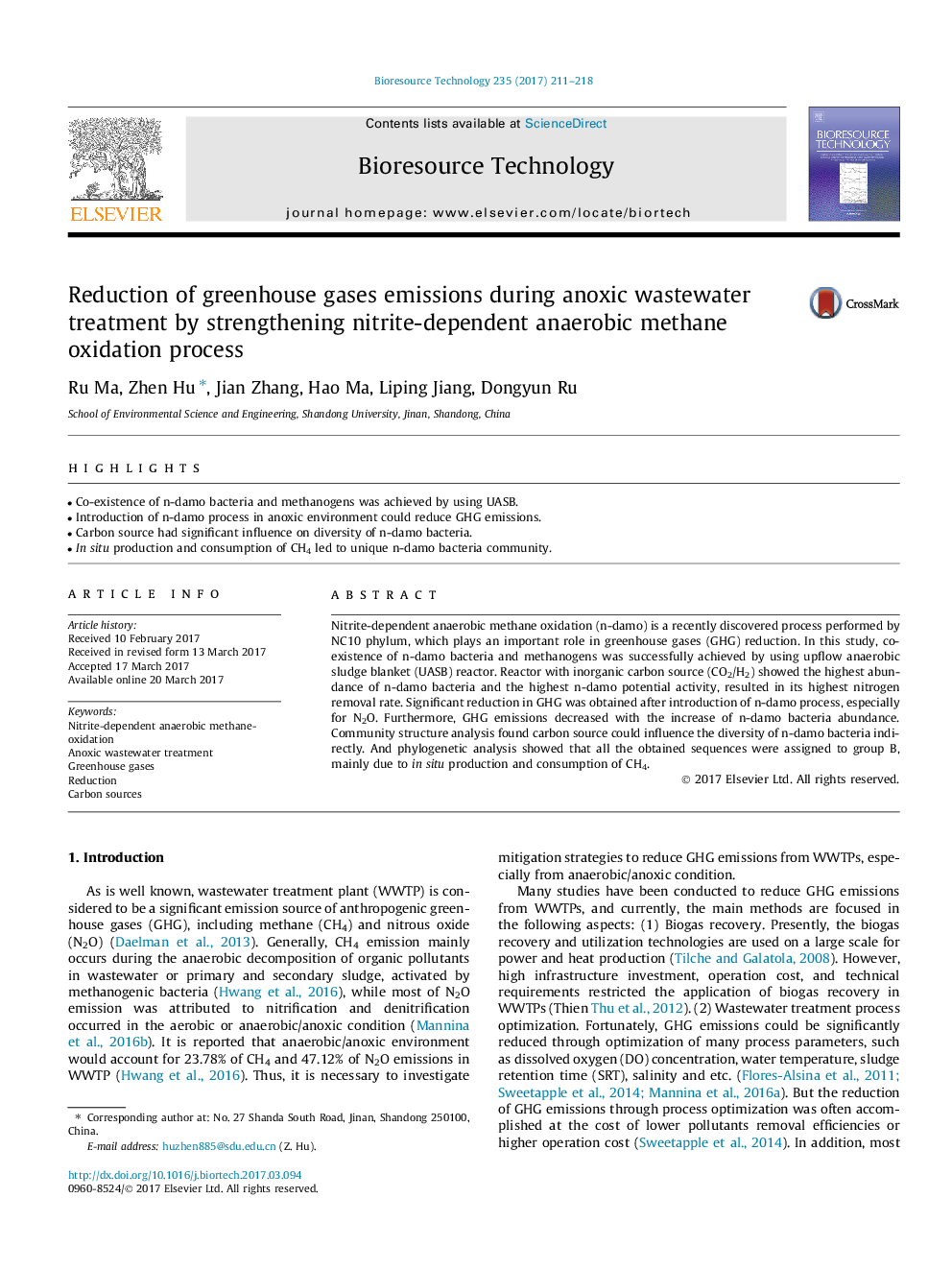| کد مقاله | کد نشریه | سال انتشار | مقاله انگلیسی | نسخه تمام متن |
|---|---|---|---|---|
| 4997360 | 1459908 | 2017 | 8 صفحه PDF | دانلود رایگان |
- Co-existence of n-damo bacteria and methanogens was achieved by using UASB.
- Introduction of n-damo process in anoxic environment could reduce GHG emissions.
- Carbon source had significant influence on diversity of n-damo bacteria.
- In situ production and consumption of CH4 led to unique n-damo bacteria community.
Nitrite-dependent anaerobic methane oxidation (n-damo) is a recently discovered process performed by NC10 phylum, which plays an important role in greenhouse gases (GHG) reduction. In this study, co-existence of n-damo bacteria and methanogens was successfully achieved by using upflow anaerobic sludge blanket (UASB) reactor. Reactor with inorganic carbon source (CO2/H2) showed the highest abundance of n-damo bacteria and the highest n-damo potential activity, resulted in its highest nitrogen removal rate. Significant reduction in GHG was obtained after introduction of n-damo process, especially for N2O. Furthermore, GHG emissions decreased with the increase of n-damo bacteria abundance. Community structure analysis found carbon source could influence the diversity of n-damo bacteria indirectly. And phylogenetic analysis showed that all the obtained sequences were assigned to group B, mainly due to in situ production and consumption of CH4.
Journal: Bioresource Technology - Volume 235, July 2017, Pages 211-218
